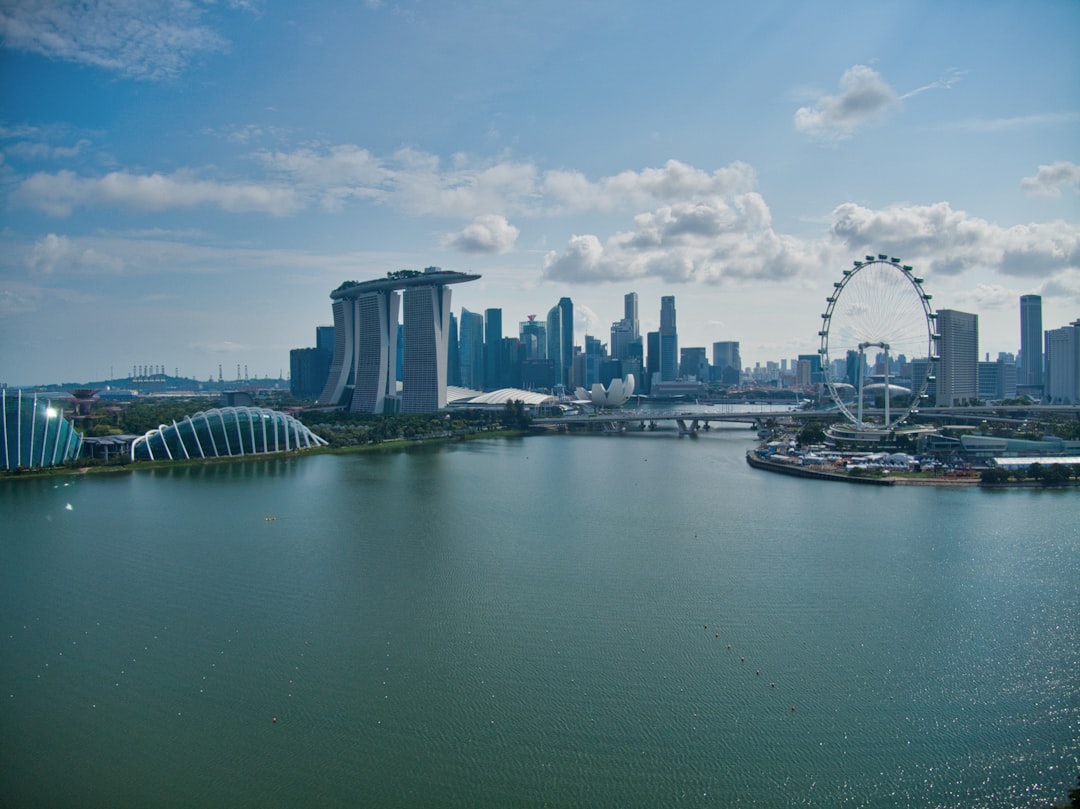A comprehensive guide to real estate investment in Singapore, covering topics such as leveraging financial resources, factors affecting property prices, exploring investment options, financing and legal considerations, wealthy investors and second property ownership, property investment beyond Singapore, and long-term strategy and risk mitigation.
Real Estate Investment Landscape in Singapore
The real estate investment landscape in Singapore presents a dynamic and resilient market, which continues to attract local and foreign investors, despite the challenges posed by cooling measures and increased stamp duties. For example, the country’s stable economy, well-established legal framework, and robust property market regulations have contributed to its attractiveness as an investment destination. Despite the recent increase in Buyer’s Stamp Duty (BSD) and Additional Buyer’s Stamp Duty (ABSD), property prices continue to rise, albeit at a moderated pace, highlighting the underlying strength of the market and its potential for long-term growth and returns.
Informed decision-making and shared investment plans play a vital role for prospective property investors in Singapore. By leveraging available financial resources such as cash, CPF, and bank loans, investors can make strategic decisions to navigate the market effectively. It’s important to recognize the impact of various factors such as location, infrastructure, property condition, and government policies, which influence property prices and investment strategies. Furthermore, understanding the phases of property cycles , from recovery to trough, is essential for making informed investment decisions and assessing the long-term payoff. Overall, the real estate investment landscape in Singapore is multifaceted and rewarding for those who approach it with comprehensive knowledge and strategic planning.
When considering the investment landscape in Singapore, it is important to note that property investment requires complex decision-making, and having a shared investment plan is crucial. Attention to detail is also vital for identifying and examining small expenses that could eat into gains, making it imperative to have reserves to cover at least six months of expenses and avoid making rash decisions. These considerations underscore the intricate nature of property investment and the importance of thorough planning and financial preparedness.
The resilient property market in Singapore continues to attract investors due to its stability, clear ownership laws, and protection of property rights, making it a favorable destination for property investment. Despite the recent increase in Buyer’s Stamp Duty (BSD) and Additional Buyer’s Stamp Duty (ABSD), the market remains robust, offering potential for long-term growth and returns. This resilience is a testament to the country’s strong economic fundamentals, which continue to position it as an attractive investment hub in the region.
Leveraging Financial Resources for Property Investment
Wise property investing in Singapore involves leveraging available cash, CPF, and bank loans effectively to maximize investment potential. For example, having a substantial amount of cash can be used as a down payment for a property, reducing the overall loan amount and interest payments. Similarly, utilizing CPF funds to finance the property purchase, coupled with seeking bank loans to cover the remaining portion of the property’s cost, can optimize the investment potential for prospective investors.
Moreover, keen attention to detail is crucial for identifying and examining small expenses that could erode potential gains. For instance, property investors need to carefully assess various costs such as maintenance fees, property taxes, insurance, and other recurring expenses to ensure that the investment remains financially viable in the long run. Additionally, having reserves to cover at least six months of expenses is vital. This financial cushion can help investors weather any unexpected financial challenges such as property vacancies, unexpected maintenance costs, or temporary market downturns without making rash decisions that could erode the investment’s potential. By carefully managing these financial aspects, investors can enhance their chances of achieving sustainable returns from their property investments in Singapore.
When leveraging financial resources for property investment, it is important to recognize the potential hindrances that may impact the long-term payoff of a property. For instance, a property with strong growth prospects may face obstacles such as an unfavorable location. However, despite these hindrances, the long-term payoff of such a property can be worth the investment, highlighting the need for a comprehensive assessment of various factors that influence investment decisions.
Factors Affecting Property Prices and Investment Strategies
The factors that affect property prices in Singapore are multifaceted and play a crucial role in shaping investment strategies in the real estate market. Location, infrastructure, property condition, lease duration, prevailing interest rates, and government policies are among the key factors that exert significant influence on property prices. For example, properties located in prime areas with excellent access to amenities and transportation often command higher prices compared to those in less desirable locations. Similarly, infrastructure development, such as the construction of new MRT (Mass Rapid Transit) lines or commercial hubs, can significantly impact property prices, making it an important consideration for investors.
Understanding the phases of property cycles, including recovery, expansion, peak, recession, and trough, is essential for making informed investment decisions and assessing the long-term payoff of potential investments. Each phase presents unique opportunities and challenges for property investors, and comprehending these cycles is vital for formulating a well-informed investment strategy that aligns with the long-term investment goals and risk management strategies.
In addition to these factors, it’s important to consider the economic climate and the prices of comparable units nearby, as they can influence property prices and investment decisions. For instance, changes in government policies related to housing regulations or loan restrictions can directly impact the demand and supply dynamics, thereby affecting property prices and investment strategies. By comprehensively assessing these factors, investors can make informed decisions and position themselves strategically in the real estate market.
Exploring Investment Options: Property Ownership vs. REITs
When exploring investment options in the real estate market, potential investors must carefully consider the advantages and disadvantages of property ownership versus investing in real estate investment trusts (REITs). For example, when opting for property ownership, investors need to take into account the property type, location, potential rental income, and the overall process of negotiation and paperwork involved in the transaction. This includes assessing various property types such as residential, commercial, and industrial, and understanding the potential rental income and capital appreciation associated with each type.
On the other hand, REITs present an alternative avenue for investment in the property market, offering benefits such as dividends and greater liquidity. For instance, investors might choose to invest in a commercial REIT, which allows them to benefit from rental income generated by a diverse portfolio of commercial properties without the need for direct property ownership. This provides investors with the flexibility to access the real estate market without the responsibilities of property management, maintenance, and tenant issues, which are inherent to traditional property ownership.
Return on investment for both property ownership and REIT investments can be calculated by assessing factors such as rental income, capital appreciation, and potential tax benefits. By carefully weighing the pros and cons of each option, investors can make informed choices that align with their long-term investment goals and risk management strategies. For instance, property ownership provides high cash flow but requires managing various issues and has a high capital outlay, while REITs have less hassle, a lower entry barrier, and greater liquidity for selling shares.
Impact of Recent Cooling Measures and Stamp Duties
The impact of recent cooling measures and increased stamp duties on the real estate market in Singapore has been significant. The Buyer’s Stamp Duty (BSD) and Additional Buyer’s Stamp Duty (ABSD) have been increased, affecting both residential and non-residential properties in the country. For instance, the increase in ABSD for residential properties in April 2023 has directly impacted the decision-making process of property investors, especially those looking to make additional property purchases. This has led to a reassessment of investment strategies and a shift in focus towards alternative investment options.
Furthermore, the anticipation of property price moderation due to higher interest rates and tighter lending limits has prompted investors to seek out other avenues for investment diversification. As a result, there has been a growing interest in real estate investment trusts (REITs), property stocks, and property exchange-traded funds (ETFs) as viable alternatives to traditional property ownership. This shift in investment focus has led to a deeper exploration of the benefits and potential returns offered by these alternative investment options, as investors aim to navigate the evolving landscape of the real estate market in Singapore.
The recent policy changes have also led to a more cautious approach from investors, prompting them to thoroughly assess the potential risks and returns associated with property ownership and REIT investments. Understanding the implications of these cooling measures and stamp duties is essential for investors to make sound investment decisions and adapt their investment strategies as the market landscape evolves.
 Financing and Legal Considerations in Property Investment
Financing and Legal Considerations in Property Investment
When it comes to financing investment properties in Singapore, potential investors face various challenges that can impact their decisions. Additional Buyer’s Stamp Duty (ABSD), Loan-to-Value (LTV) limits, and Total Debt Servicing Ratio (TDSR) are crucial factors influencing the financial landscape of property investment. For instance, the ABSD imposes additional stamp duty on top of the existing Buyer’s Stamp Duty, affecting both residential and non-residential properties. This can significantly increase the upfront costs of property acquisition for investors, thereby impacting their financial planning and investment strategies.
Moreover, Singaporeans interested in owning properties overseas encounter specific rules and restrictions that affect their financing options. For example, there are limitations on using CPF OA monies for financing properties located outside of Singapore. Additionally, managing the paperwork, navigating language barriers, and overseeing the property from a distance are considerable challenges associated with overseas property investment. These factors necessitate a thorough evaluation of the financial implications and legal considerations when venturing into overseas property investment, highlighting the complexity of real estate investment beyond Singapore’s borders.
The financial landscape of property investment in Singapore is influenced by various legal considerations, underscoring the need for potential investors to seek expert financial advice and engage in comprehensive financial planning. This involves carefully navigating the regulations and restrictions associated with property financing, both domestically and overseas, to ensure a sound and well-structured investment approach.
Wealthy Investors and Second Property Ownership
The recent cooling measures and increased stamp duties in Singapore have significant implications for wealthy property investors and Singaporeans purchasing second properties. The impact of the Buyer’s Stamp Duty (BSD) and Additional Buyer’s Stamp Duty (ABSD) on residential and non-residential properties has led to increased costs for high-net-worth individuals seeking to expand their property portfolios.
Wealthier investors are now faced with the challenge of managing higher upfront costs when acquiring additional properties. For example, a Singaporean individual looking to purchase a second residential property will now encounter substantially higher stamp duties, which may influence their investment decisions and overall property acquisition strategy. As a result, these investors are compelled to reassess their financial capabilities and conduct thorough evaluations of the potential returns and risks associated with property investment in the current market landscape. Additionally, they must consider alternative investment avenues such as real estate investment trusts (REITs) or property stocks, which may present a more viable and cost-effective option given the recent policy changes.
In light of these developments, it is crucial for wealthy investors and individuals considering second property ownership to seek expert financial advice and engage in comprehensive financial planning to mitigate the impact of increased stamp duties and navigate the evolving property investment environment in Singapore.
Property Investment Beyond Singapore
When considering property investment beyond Singapore, potential investors should be aware of the various challenges and potential returns associated with overseas properties. These challenges may include managing the property from a different country, navigating through unfamiliar paperwork, and dealing with potential language barriers. For example, an investor looking to purchase a property in the UK would need to be familiar with the local property laws, tax regulations, and market trends to make sound investment decisions.
Moreover, popular choices for overseas property investment include countries like Australia, the United Kingdom, the United States, as well as select Southeast Asian countries. For instance, Australia is favored for its strong rental yields and stable property market, while the UK is known for its robust legal framework and potential for capital appreciation. It is vital for investors to conduct comprehensive research on the economic and political stability, property laws, and rental demand of these countries before making any investment decisions. This ensures that potential risks are mitigated, and the investment aligns with the investor’s long-term financial goals.
The process of investing in overseas properties requires careful consideration of the legal and financial implications, as well as a thorough understanding of the market dynamics of the target country. For example, investors need to assess the potential returns, risks, and regulatory frameworks associated with overseas property investments to make informed and strategic decisions. By conducting thorough due diligence and seeking expert advice, investors can navigate the opportunities and challenges of overseas property investment and position themselves for long-term success.
Long-Term Strategy and Risk Mitigation
When it comes to real estate investment in Singapore, it is crucial to adopt a long-term strategy and implement risk mitigation measures to ensure a successful investment journey. This involves leveraging available financial resources such as cash, CPF, and bank loans in a strategic manner to optimize investment opportunities and mitigate potential risks. By carefully managing financial resources and maintaining a strong financial position, investors can effectively mitigate risks and position themselves for long-term success in the real estate market.
Mitigating risks and maintaining financial capability in property investment is essential for long-term success. This involves thorough research, financial planning, and a comprehensive understanding of the market dynamics. For example, investors need to assess the potential hindrances and obstacles that may impact the long-term payoff of a property, thereby enabling them to make informed investment decisions. By demonstrating financial preparedness and strategic planning, investors can navigate the challenges and opportunities of the real estate market and position themselves for long-term success.
Conclusion
In summary, thorough research and financial preparedness are key to making sound investment decisions in the real estate market in Singapore. By leveraging available financial resources effectively and understanding the various factors that influence property prices and investment strategies, potential investors can make informed decisions and position themselves strategically in the market. The resilience of the Singapore property market, despite the recent cooling measures and stamp duties, underscores its potential for long-term growth and returns. By adopting a long-term strategy, mitigating risks, and maintaining strong financial capability, investors can navigate the dynamic landscape of property investment and achieve sustainable returns in the Singapore real estate market.





